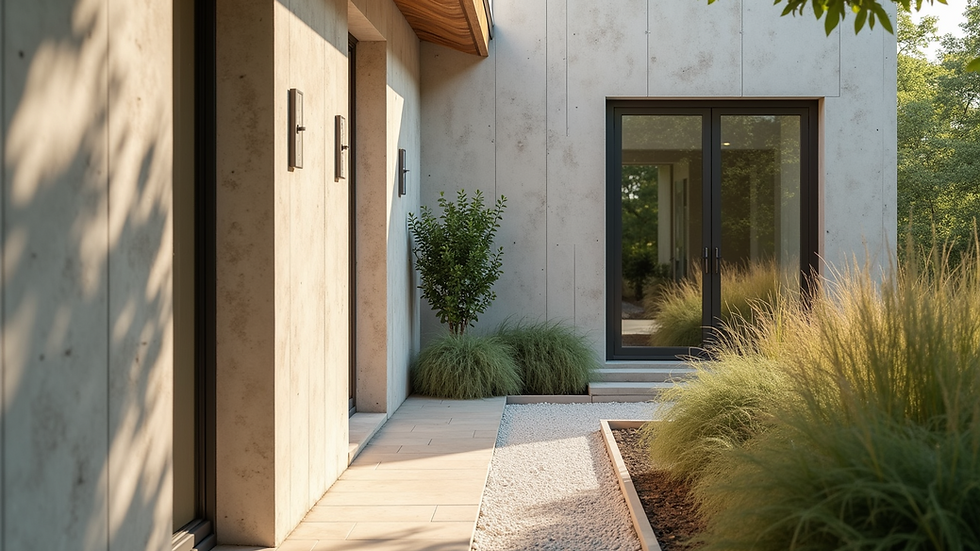Balancing Cost and Design Quality in Facade Engineering
- Oct 9
- 4 min read
In architecture and construction, the facade is a building's first impression. More than just a protective layer, it reflects creativity and design philosophy and plays a key role in energy efficiency. Finding the right balance between cost and design quality in facade engineering presents unique challenges but also significant opportunities. This blog post explores how to merge aesthetic appeal with budget requirements in facade design.

Understanding Facade Design
Facade design involves planning a building's exterior, choosing materials, colors, textures, and structural elements. This part of the structure is the most visible and requires careful consideration of its visual and practical implications.
For example, creative use of bricks, metal panels, and glass can transform a dull building into a striking landmark. The quality of these materials not only affects appearance but can also significantly influence energy efficiency, durability, and maintenance. For instance, a building with high-quality insulation can reduce energy consumption by up to 30%, highlighting the long-term benefits of investing more upfront.
The Importance of Cost Considerations
Cost is a critical factor in any facade design project. Budget constraints can limit material choices and design options, requiring architects and engineers to prioritize specific elements. Understanding how different design decisions impact finances can keep projects feasible.
Initial Costs vs. Long-Term Savings
One major challenge is distinguishing between initial costs and long-term savings. High-quality materials and advanced design methods often come with higher upfront costs but can lead to significant savings over years. Energy-efficient facades, such as those using triple-glazed windows, can reduce heating bills by as much as 25%.

Budgeting for Quality
Creating a comprehensive budget that accounts for initial and long-term expenses is crucial. This means evaluating the complete financial picture, including:
Material costs
Labor expenses
Anticipated savings from enhanced energy efficiency
By considering these factors, teams can make informed decisions that align design goals with budget realities.
Design Quality: Aesthetic and Functional Aspects
Design quality in facade engineering balances aesthetics and functionality. A well-designed facade should be visually engaging while also offering practical benefits like insulation and weather resistance.
Aesthetic Appeal
The visual aspect of a facade can greatly influence a building's public perception and success. For example, the use of natural stone can create an inviting atmosphere, while bold colors can make a statement in urban settings. Nevertheless, striking a balance between cost and aesthetic value is essential for project sustainability.
Functional Performance
In addition to look, a facade's functional capabilities are crucial. A well-insulated facade can improve energy efficiency, while features like overhangs can reduce cooling costs by blocking out direct sunlight during summer months. A report from the U.S. Department of Energy indicates that well-insulated buildings can save up to 12% on energy bills annually.
Innovative Materials and Techniques
Recent advancements in materials and construction methods have expanded options for facade design.
Sustainable Design
Sustainability is increasingly important in facade engineering. Eco-friendly materials, such as bamboo or recycled aluminum, lower environmental impact and attract eco-conscious consumers. Although these materials may cost more initially, they often pay off in reduced energy use and enhanced building value over time.
Prefabrication and Modular Design
Prefabrication and modular design can effectively balance cost and quality. Off-site manufacturing of facade components reduces construction time and labor costs. A study found that projects using prefabricated approaches could complete construction up to 20% faster than traditional methods, resulting in both time and cost savings.
Case Studies: Successful Balancing Acts
Learning from successful projects shows how to balance cost and design quality in facade engineering.
Case Study 1: The Edge, Amsterdam
The Edge in Amsterdam highlights innovative facade design that enhances aesthetics and functionality. Its facade features high-performance glass, maximizing natural light and reducing energy consumption. While initial costs were higher, the energy savings have turned it into a benchmark for sustainable architecture, demonstrating how to achieve both beauty and utility.
Case Study 2: Bosco Verticale, Milan
Bosco Verticale, or Vertical Forest, in Milan combines a visually striking facade with environmental benefits. The towers are draped with thousands of trees and plants, improving air quality and energy efficiency. Although the investment in greenery increased initial costs, the long-term benefits for both residents and the environment are significant, showcasing the value of forward-thinking design.
Strategies for Achieving Balance
To effectively balance cost and design quality in facade engineering, several strategies can be adopted.
Collaborative Design Process
A collaborative approach involving architects, engineers, and contractors fosters informed decision-making. Early teamwork can uncover cost-effective solutions that do not compromise on design quality, ensuring that projects stay on track without sacrificing creative vision.

Value Engineering
Value engineering focuses on enhancing project value by scrutinizing functions and identifying cost-saving possibilities. This process encourages teams to find solutions that maintain quality while optimizing the budget, ensuring an attractive and functional facade.
Prioritizing Key Elements
Identifying key design elements helps allocate resources effectively. By determining which features are essential for achieving aesthetic and functional goals, project teams can use their budgets wisely.
Final Thoughts
Achieving balance between cost and design quality in facade engineering is complex yet crucial. Understanding the relationship between initial costs and long-term benefits allows architects and engineers to make decisions that enhance both aesthetics and functionality.
By utilizing innovative materials, embracing sustainable practices, and adopting collaborative approaches, design teams can create facades that are not only budget-friendly but also elevate the standards of the built environment. As the industry grows and learns, pursuing this balance will remain a pivotal focus for architects and engineers alike.







Comments